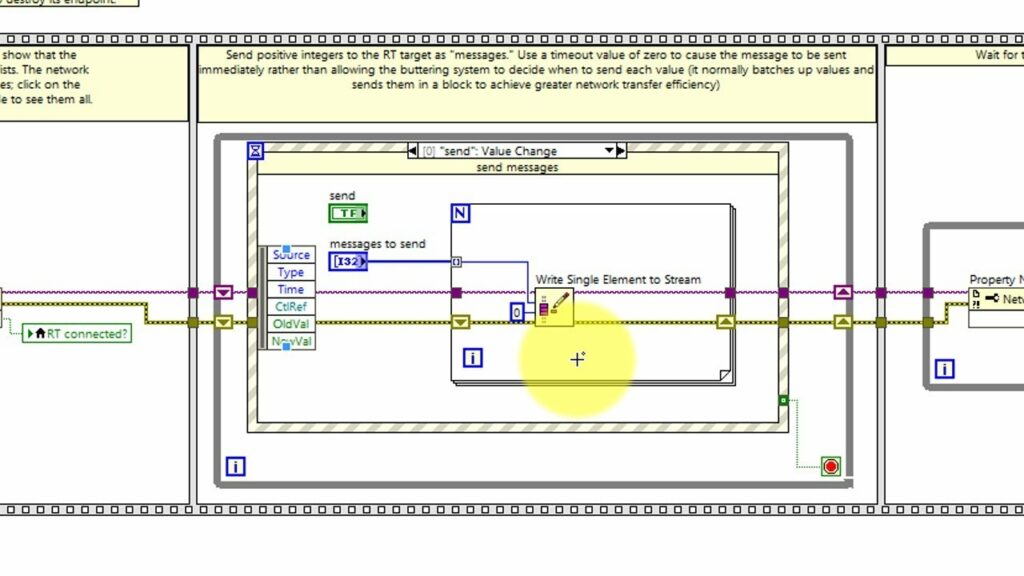Implement Networking and Communication in LabVIEW

Implementing networking and communication in LabVIEW is crucial for enabling data exchange, remote control, and collaboration across systems and devices. LabVIEW, developed by National Instruments, provides robust tools and libraries for integrating various communication protocols, enabling seamless connectivity in applications ranging from industrial automation to scientific research. This comprehensive guide will explore the principles, techniques, and best practices for implementing networking and communication in LabVIEW, empowering you to build scalable and efficient solutions.
Understanding Networking and Communication in LabVIEW
Networking and communication in LabVIEW involve establishing connections between:
- Local Systems: Interfacing LabVIEW applications with sensors, instruments, or other software systems within the same network.
- Remote Systems: Enabling communication over the internet or across geographically distributed locations.
Applications of Networking and Communication in LabVIEW
Networking and communication capabilities in LabVIEW serve various purposes:
- Data Acquisition: Acquiring data from sensors, instruments, or industrial equipment.
- Control Systems: Enabling remote control and monitoring of devices and processes.
- Distributed Systems: Facilitating collaboration and synchronization between multiple LabVIEW applications or systems.
- Real-Time Data Streaming: Transmitting real-time data for analysis, visualization, or remote monitoring.
Implementing Networking and Communication in LabVIEW
1. Choosing Communication Protocols
Select appropriate communication protocols based on application requirements:
- TCP/IP (Transmission Control Protocol/Internet Protocol): Reliable, connection-oriented protocol for transmitting data packets over networks.
- UDP (User Datagram Protocol): Lightweight, connectionless protocol suitable for real-time data streaming and communication.
- Serial Communication: RS-232, RS-485 protocols for interfacing with serial devices (e.g., sensors, PLCs).
2. Implementing TCP/IP Communication
Configure TCP/IP communication in LabVIEW:
- TCP/IP Client/Server: Develop TCP/IP client and server applications for bi-directional communication.
- Network Streams: Use LabVIEW Network Streams for high-level communication over TCP/IP, simplifying data transmission and synchronization.
3. Implementing UDP Communication
Enable UDP communication for real-time data exchange:
- UDP Send/Receive: Implement UDP send and receive functionalities in LabVIEW for low-latency communication.
- Broadcasting: Utilize UDP broadcasting for sending data to multiple recipients within a network.
4. Serial Communication
Interface LabVIEW with serial devices using serial communication protocols:
- VISA (Virtual Instrument Software Architecture): Use LabVIEW’s VISA API for serial communication, supporting RS-232, RS-485, and other serial protocols.
- Advanced Serial Ports: Implement advanced serial port configurations (e.g., baud rate, parity, stop bits) for precise device communication.
5. Web Services and APIs
Expose LabVIEW functionalities as web services or APIs for remote access:
- HTTP/RESTful APIs: Develop RESTful APIs in LabVIEW for web-based communication and data exchange.
- SOAP Web Services: Implement SOAP-based web services using LabVIEW Web Service nodes for standardized communication.
6. Advanced Techniques
Explore advanced networking techniques in LabVIEW:
- WebSockets: Implement bi-directional communication between LabVIEW applications and web clients using WebSockets.
- Data Distribution Service (DDS): Utilize DDS for scalable and reliable data distribution in distributed systems.
Best Practices for Implementing Networking and Communication
Adopt best practices to ensure efficiency, reliability, and security:
- Error Handling: Implement robust error handling mechanisms to manage network errors and ensure graceful degradation.
- Data Encryption: Use secure communication protocols (e.g., HTTPS, SSL/TLS) for encrypted data transmission over networks.
- Performance Optimization: Optimize network performance through data compression, bandwidth management, and efficient data handling techniques.
Considerations and Challenges
Address challenges when implementing networking and communication in LabVIEW:
- Network Latency: Manage network latency to maintain real-time responsiveness in data-intensive applications.
- Security: Implement authentication and authorization mechanisms to secure network communications and protect sensitive data.
Integration with Other Systems
Integrate LabVIEW with other systems and technologies:
- Database Integration: Store and retrieve data from databases (e.g., SQL, NoSQL) using LabVIEW for data logging and analysis.
- Cloud Integration: Utilize cloud platforms (e.g., AWS, Azure) for scalable data storage, processing, and IoT applications.
Conclusion
Implementing networking and communication in LabVIEW enables seamless integration, data exchange, and collaboration across systems and devices. By leveraging LabVIEW’s powerful tools and libraries for TCP/IP, UDP, serial communication, and web services, developers can build robust applications for data acquisition, control systems, and distributed systems. Embrace the principles, techniques, and best practices outlined in this guide to create scalable and efficient LabVIEW solutions that meet the evolving demands of networking and communication in today’s interconnected world. Whether for industrial automation, scientific research, or IoT deployments, LabVIEW empowers engineers and scientists to innovate and optimize processes through reliable and secure networked communication solutions.




